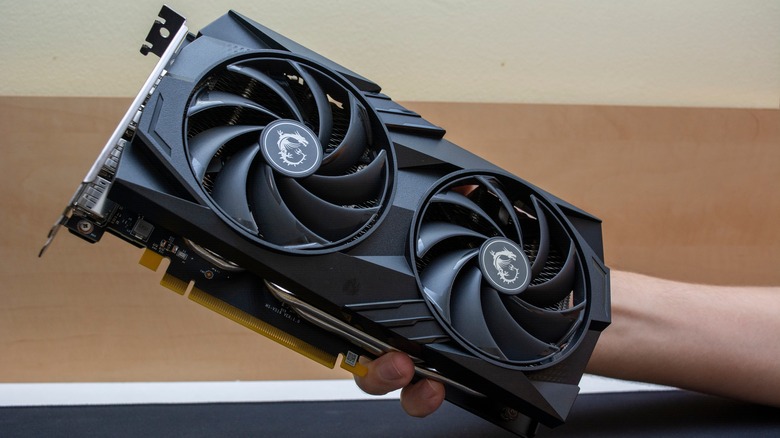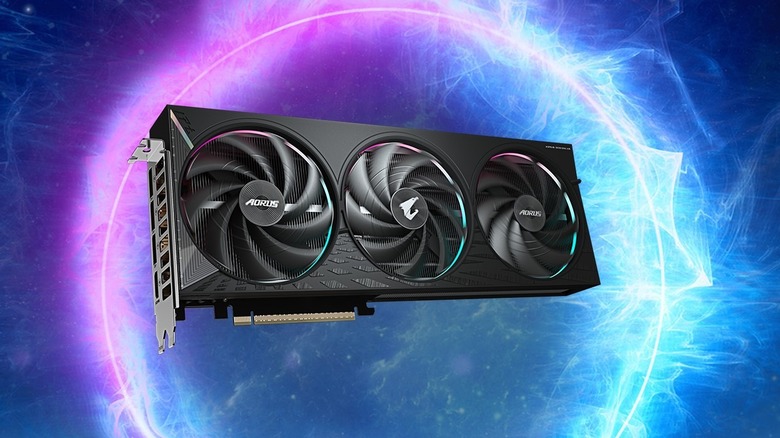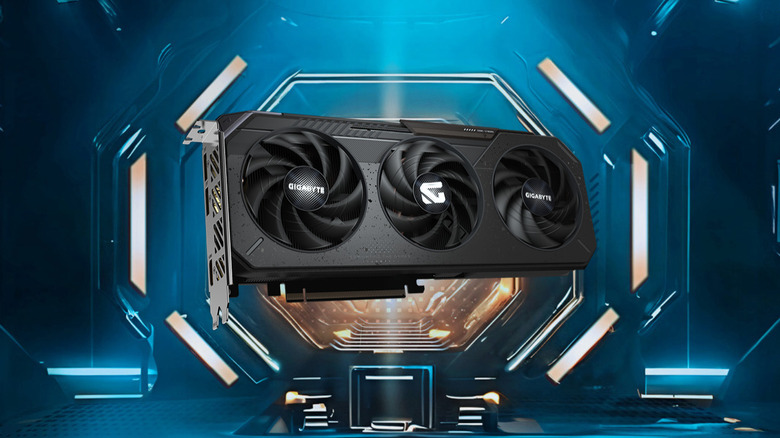Why You Should Avoid Nvidia And AMD's New 8 Gigabyte Graphics Cards
We may receive a commission on purchases made from links.
Shopping for one of the best graphics cards is no easy feat these days. Aside from navigating elevated pricing and dubious gen-on-gen improvements, we're left to worry about whether the amount of video memory (VRAM) on a given GPU will be enough for our needs. Spoiler alert: Oftentimes, it won't be, and some of the most popular GPUs from AMD and Nvidia just don't cut it anymore. If you want to be able to game at high settings, especially higher resolutions, you can't ignore VRAM.
VRAM is responsible for storing visual data while you play games, and as games get more complex, your GPU memory needs to deal with heavier loads. Higher resolutions increase pixel density, forcing the VRAM to process more data. It's not just raw VRAM that matters, but also the width of the bus interface that the GPU has. A GPU with lots of RAM but a narrow bus will have less memory bandwidth, which means slower data transfers between the GPU and the VRAM. In other words, the more complex your games (ray tracing, for example), the more VRAM your GPU needs.
Unfortunately, Nvidia and AMD continue selling GPUs that are less-than-perfect for what's yet to come in AAA gaming. Those are GPUs that will work fine for now, but in a couple of years, they might leave you frustrated. As a PC builder and tech journalist with over a decade of experience, I'll give you a few reasons to skip Nvidia's and AMD's 8 GB VRAM graphics cards, and show you some alternatives to pick instead.
The VRAM dilemma comes down to more than just performance
VRAM is a hot topic in tech media right now, and with good reason. While everything in tech moves forward rapidly, video memory in mainstream GPUs is at a frustrating standstill. The previous generation introduced not just the RX 7600 and the RTX 4060 (both sport 8 GB VRAM across a 128-bit bus), but also the RTX 4060 Ti (8 GB or 16 GB, 128-bit) and the RX 7600 XT (16 GB, 128-bit). I was not a huge fan of them already back then, and now, seeing history repeat itself in the RTX 50-series and the RX 9000 series is, to put it mildly, discouraging.
Both AMD and Nvidia launched the exact same kind of GPU this time around, VRAM-wise. The RX 9060 XT is available in 8 GB and 16 GB flavors, just like the RTX 5060 Ti. Meanwhile, the RTX 5060 retains its 8 GB VRAM and 128-bit bus configuration. But the lack of video memory is just one part of the problem; the value-for-the-money aspect and the price also don't add up.
Granted, not everyone needs a high-end GPU, but if you're spending upwards of $379 on the RTX 5060 Ti 8 GB, you should be able to game at more than 1080p for a few years. To upgrade to 16 GB VRAM (and that same, narrow 128-bit bus that limits bandwidth), you'll spend $479 or more, well above MSRP. The RTX 5060 sells for around its MSRP of $300, but again, you're spending $300 on something that reviewers know will not stand the test of time.
Benchmarks reveal the true extent of the problem
Years go by, AAA games are more demanding than ever, and we're still stuck in the same loop of being starved for VRAM. I've tested the RTX 4060 Ti 8 GB myself and was painfully unimpressed with what it had to offer for the price. Its successors don't fare any better, and benchmark scores truly highlight that. TechRadar's review of the RX 9060 XT 8 GB and 16 GB reveals a rift between the two GPUs, even though they share most specs except for memory capacity. The 8 GB card is 4% slower in gaming at 1080p, but 9% slower at 1440p, showing the importance of VRAM at higher resolutions.
Meanwhile, TechPowerUp found the card to be 5% slower at 1080p, 4.7% at 1440p, and 7.9% at 4K. The 8 GB version of the RTX 5060 Ti suffers from the same problems. TechPowerUp's review shows that it's equal to the 16 GB version at 1080p, but 3.7% slower at 1440p, and a massive 15.9% slower at 4K. This is a card that costs at least $379, and yet, it can't compete against the 16 GB model even today.
The difference will only grow bigger as more people switch to 1440p monitors for gaming and games continue demanding more. If I were buying a graphics card right now, I'd steer clear of AMD's and Nvidia's latest 8 GB offerings. You're better off picking the Intel Arc B580 if you're on a tight budget (more VRAM, worse rasterization performance), or the 16 GB RTX 5060 Ti or RX 9060 XT if you can. It might not make or break your gaming experience, but one day, you'll be glad you didn't go with an 8 GB GPU.


